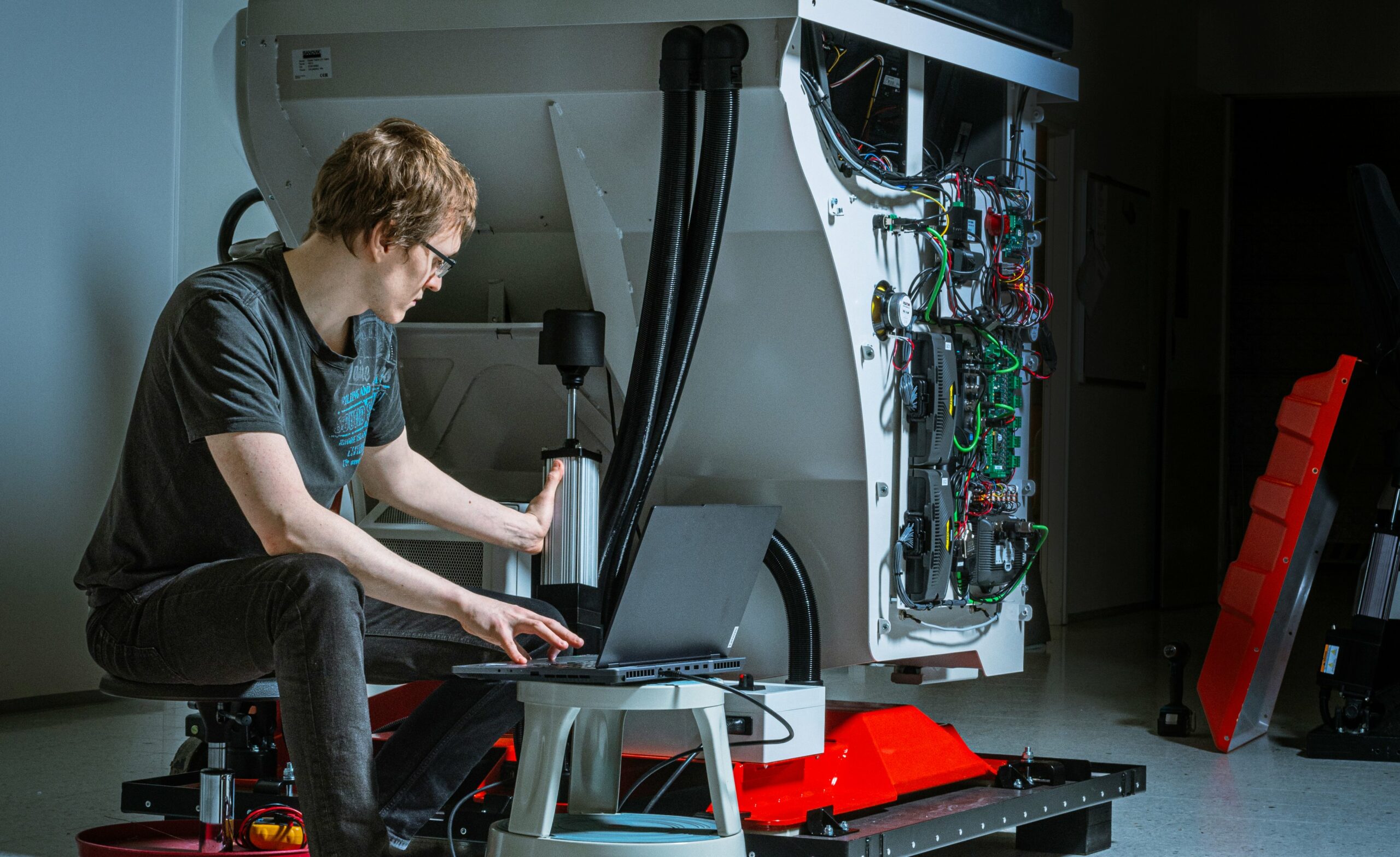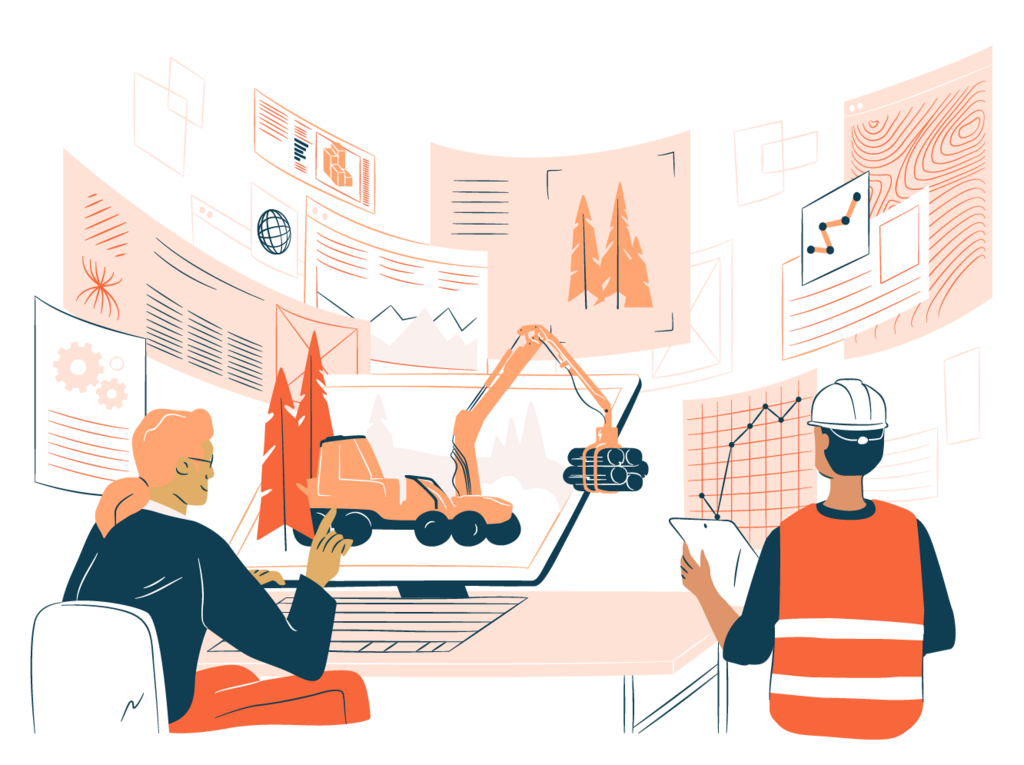Great changes for manufacturing are on the horizon. The list of requirements to ensure responsibility, safety and cost-effectiveness keeps on growing, as companies need to be able to create machines that are both energy-efficient and in line with sustainable development. Reforming the traditional product development process is necessary for companies to maintain their competitive advantage.
In general, product development for mobile machinery involves building several prototypes to test the functionalities of the control system and potential failures during the system’s software development. However, creating physical prototypes is both expensive and slow and ultimately does not allow for comprehensive testing of the machine in its different operating situations. A digitalised product lifecycle leads to improved quality, shorter product development cycles and cost savings. Furthermore, it also accelerates the introduction of products to the markets.
Simulators in a digitalised product lifecycle
The term “simulator” has a variety of meanings for different people. Some think of flight simulators, other people’s thoughts turn to game-like FPV worlds while others find their minds venturing down completely different avenues. At Gofore, we use the term simulator to refer to a way of modelling the operation of a mobile machine with the desired accuracy, and the way in which data collected from the modelling is utilised in the product’s conceptualisation, development and training once it is deployed.
The business idea for the product is formed during the conceptualisation phase of the system, and simulation can be a useful tool at this stage for testing different system solution concepts and evaluating their benefits. A good example of this is the dimensioning of parameters for a machine’s power transmission line or evaluation of its UI’s functionality utilising AR, VR and XR technologies. During the conceptualisation phase, the product’s functionalities are modelled in a very simplistic way as the goal is to gain a general understanding of how the modelled solutions affect the system’s functionality and implementation costs, for instance.
As the process moves on to the system’s product development phase, more detail can be added to the simplistic operating models thanks to the digitalised product lifecycle. With modelling, the behaviour and functionalities of a mobile machine can be simulated in scenarios that are as close to the product’s real operating situations as possible, while also taking the machine’s control system and physical behaviour into account. As such, the machine can be tested in its actual operating environment. This also reveals any development needs that the product might have, and it can be developed even further based on those needs prior to building an actual physical prototype. Hence, simulation is strongly rooted in reality, and today simulators can be utilised more comprehensively in product development than before. The product development phase also involves hardware-based testing of a machine’s functionality or testing its functions through virtualisation.
Once product development has finished, the machine or system will be manufactured and handed over to the end user. It is vital to ensure that the end user is able to operate the system correctly and practise its use virtually, especially when it comes to complicated mobile machinery. Having a model and simulation-driven product development process means that the creation of a training simulator is already well under way. The previously created model of the machine can be utilised in the simulator where it will be tested by creating a virtual 3D environment or by utilising AR, VR and XR technologies for even more immersive simulation. Creating a training simulator in this way also means that the simulated machine functions more like the actual product.
Read how intelligent innovation drives the development of Avant Tecno’s green loaders
More agile development
Digitalised product development enables the creation of a virtual prototype, with which a machine’s functions can be modelled in the required detail. The prototype can be used to model the machine’s physical features, control system’s functioning and sensors.
A virtual prototype can involve both software virtualisation (SIL) and real control components of the system (HIL). Virtualisation enables several developers to work on development and testing simultaneously, and any changes to the functioning of the system can be verified more easily than with a physical prototype. Moreover, any failures that might occur will not result in machine breakdowns or dangerous situations, which is essential when testing autonomous functions, for example. Utilising virtualisation and simulation in product development yields significant savings both in terms of money and time. The machine and its simulator can also be developed further throughout its digital lifecycle towards a digital twin of the machine.
It is important to keep in mind that simulation is not done simply for the thrill of it. The clear primary goal should be to both accelerate the development of the product and enable its further agile development. While simulation can produce functionality that is incredibly close to the real-world functioning of a machine, it is worth considering how accurate the simulation actually needs to be for each part. For instance: When you have a simulation that is 99% accurate in comparison to reality and one that is 92% accurate, that distinction can be extremely significant when it comes to workload while having very little bearing on the actual end result. Thus, simulation is a good servant but a bad master.



